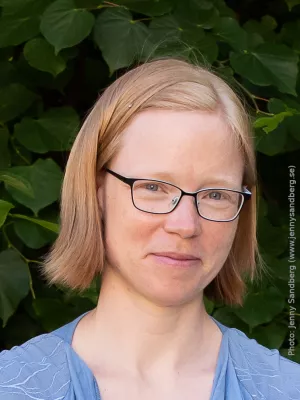
Korinna Zapp
Senior lecturer

A local Monte Carlo framework for coherent QCD parton energy loss
Author
Summary, in English
Monte Carlo (MC) simulations are the standard tool for describing jet-like multi-particle final states. To apply them to the simulation of medium-modified jets in heavy ion collisions, a probabilistic implementation of medium-induced quantum interference effects is needed. Here, we analyze in detail how the quantum interference effects included in the Baier-Dokshitzer-Mueller-Peigné-Schiff–Zakharov (BDMPS-Z) formalism of medium-induced gluon radiation can be implemented in a quantitatively controlled, local probabilistic parton cascade. The resulting MC algorithm is formulated in terms of elastic and inelastic mean free paths, and it is by construction insensitive to the IR and UV divergences of the total elastic and inelastic cross sections that serve as its basic building blocks in the incoherent limit. Interference effects are implemented by reweighting gluon production histories as a function of the number of scattering centers that act within the gluon formation time. Unlike existing implementations based on gluon formation time, we find generic arguments for why a quantitative implementation of quantum interference cannot amount to a mere dead-time requirement for subsequent gluon production. We validate the proposed MC algorithm by comparing MC simulations with parametric dependencies and analytical results of the BDMPS-Z formalism. In particular, we show that the MC algorithm interpolates correctly between analytically known limiting cases for totally coherent and incoherent gluon production, and that it accounts quantitatively for the medium-induced gluon energy distribution ωdI/dω and the resulting average parton energy loss. We also verify that the MC algorithm implements the transverse momentum broadening of the BDMPS-Z formalism. We finally discuss why the proposed MC algorithm provides a suitable starting point for going beyond the approximations of the BDMPS-Z formalism.
Publishing year
2011
Language
English
Publication/Series
Journal of High Energy Physics
Volume
2011
Issue
7
Document type
Journal article
Publisher
Springer
Topic
- Subatomic Physics
Status
Published
ISBN/ISSN/Other
- ISSN: 1029-8479

